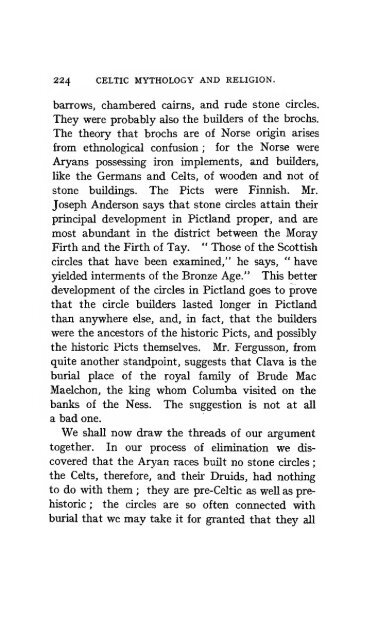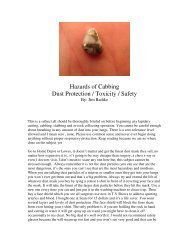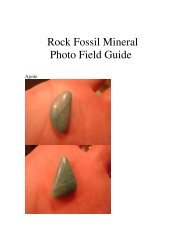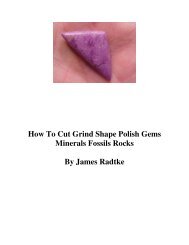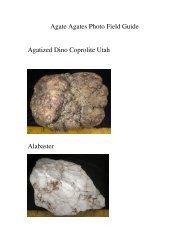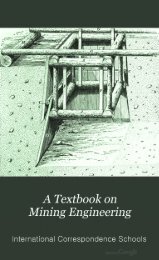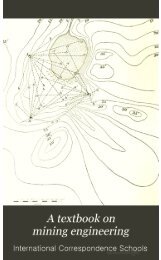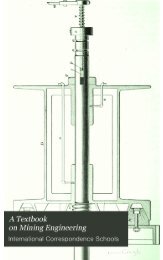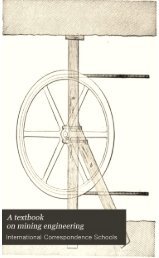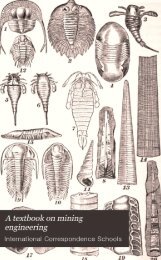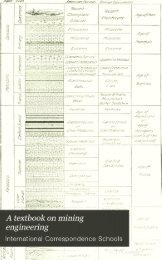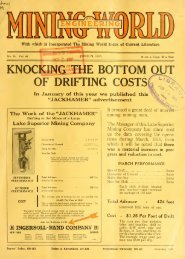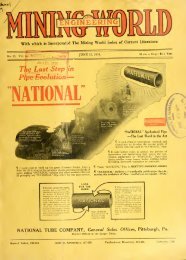- Page 2 and 3:
CORNELL UNIVERSITY LIBRARY
- Page 6 and 7:
-#•" CELTIC MYTHOLOGY AND RELIGIO
- Page 8 and 9:
Page v Introduction, Celtic Mytholo
- Page 12 and 13:
INTRODUCTION. Alexander MacBain, ge
- Page 14 and 15:
INTRODUCTION. . Vll had the habit o
- Page 16 and 17:
INTRODUCTION. IX them to do. Rainin
- Page 18 and 19:
INTRODUCTION. an important influenc
- Page 20 and 21:
INTRODUCTION. Mil course was small
- Page 22 and 23:
INTRODUCTION. XV ing place than it
- Page 24 and 25:
INTRODUCTION. XVII but the genuine
- Page 26 and 27:
CELTIC MYTHOLOGY AND RELIGION.
- Page 28 and 29:
CELTIC AND MYTHOLOGY RELIGION The f
- Page 30 and 31:
CHARACTER OF MYTH. II " The same th
- Page 32 and 33:
CHARACTER OF MYTH. Xg Such is a goo
- Page 34 and 35:
CHARACTER OF MYTH. T£ variation. H
- Page 36 and 37:
CAUSE OF MYTH. 17 And this being th
- Page 38 and 39:
CAUSE OF MYTH. ICJ stoutest support
- Page 40 and 41:
CAUSE OF MYTH. 21 » of science ; t
- Page 42 and 43:
CAUSE OF MYTH. 23 of his feelings,
- Page 44 and 45:
CAUSE OF MYTH. 2$ Hug na stuaidh mu
- Page 46 and 47:
SPREAD OF MYTH. 2J* SPREAD OF MYTH.
- Page 48 and 49:
SPREAD OF MYTH. 29. adopted into ev
- Page 50 and 51:
THE ARYAN NATION. 31 Aryans were or
- Page 52 and 53:
THE ARYAN NATION. 33 , beliefs took
- Page 54 and 55:
THE ARYAN NATION. 35, up under the
- Page 56 and 57:
THE ARYAN NATION. 37 # is clearly a
- Page 58 and 59:
ARYAN MYTHS. 39 may be seen chewing
- Page 60 and 61:
ARYAN MYTHS. 41 ( Gaelic popular st
- Page 62 and 63:
RESULTS OF THE GENERAL PRINCIPLES.
- Page 64 and 65:
SOURCES OF INFORMATION. 45 Elton an
- Page 66 and 67:
SOURCES OF INFORMATION. 47 people,
- Page 68 and 69:
THE CELTS. 49 ated above shows the
- Page 70 and 71:
THE CELTS. 5 1 districts has also b
- Page 72 and 73:
WELSH AND GAELS. 5J cultus, and it
- Page 74 and 75:
CELTIC CHARACTERISTICS. 55 needless
- Page 76 and 77:
CELTIC CHARACTERISTICS. 57 of gold,
- Page 78 and 79:
CELTIC CHARACTERISTICS. 59 Romans.
- Page 80 and 81:
THE GAULISH RELIGION. 6\ on the ban
- Page 82 and 83:
THE GAULISH RELIGION. 63 given to r
- Page 84 and 85:
THE GAULISH RELIGION. 65 " Et quibu
- Page 86 and 87:
THE GAULISH RELIGION. 67 various lo
- Page 88 and 89:
DRUIDISM. 69 DRUIDISM. One feature
- Page 90 and 91:
DRUIDISM. 71 The references in Plin
- Page 92 and 93:
DRUIDISM. 73 to be twofold, that th
- Page 94 and 95:
DRUIDISM. 7£ proceeds to describe,
- Page 96 and 97:
druidism. yy apple, with a cartilag
- Page 98 and 99:
DRUIDISM. 7^ discussed, and looking
- Page 100 and 101:
druidism. 8j; these spells. A wisp
- Page 102 and 103:
DRUIDISM. 83 # Nor is tradition of
- Page 104 and 105:
CELTIC RELIGION IN BRITAIN AND IREL
- Page 106 and 107:
BRITISH RELIGION. 87 1 and supersti
- Page 108 and 109:
BRITISH RELIGION. 89 introduced int
- Page 110 and 111:
BRITISH RELIGION. C-I the son of Ma
- Page 112 and 113:
BRITISH RELIGION. 93# of them, and
- Page 114 and 115:
BRITISH RELIGION. Q5 what was the n
- Page 116 and 117:
BRITISH RELIGION. 97, Tuatha-De-Dan
- Page 118 and 119:
BRITISH RELIGION. 99. be, of Tristr
- Page 120 and 121:
BRITISH RELIGION. 10 may be regarde
- Page 122 and 123:
BRITISH RELIGION. I03 Yet for all t
- Page 124 and 125:
THE GAELIC GODS IN HISTORY. 105 and
- Page 126 and 127:
THE GAELIC GODS IN HISTORY. 107. co
- Page 128 and 129:
THE GAELIC GODS IN HISTORY. IOCf de
- Page 130 and 131:
THE GAELIC GODS IN HISTORY. III. to
- Page 132 and 133:
THE GAELIC GODS IN HISTORY. II3 Bri
- Page 134 and 135:
THE GAELIC GODS IN HISTORY. 115 of
- Page 136 and 137:
GODS OF THE GAELS. 117 • as to th
- Page 138 and 139:
GODS OF THE GAELS. Iig oath in Iris
- Page 140 and 141:
GODS OF THE GAELS. I2J the Dagda a
- Page 142 and 143:
GODS OF THE GAELS. I2g promise is r
- Page 144 and 145:
GODS OF THE GAELS. 12^ he had been
- Page 146 and 147:
GODS OF THE GAELS. 127 * been more
- Page 148 and 149:
GODS OF THE GAELS. 120, with absolu
- Page 150 and 151:
GODS OF THE GAELS. 131 Nuada ; it w
- Page 152 and 153:
THE CELTIC ELYSIUM. 133 believed it
- Page 154 and 155:
THE CELTIC ELYSIUM. 135 defunct rel
- Page 156 and 157:
THE CELTIC ELYSIUM. 13? of over twe
- Page 158 and 159:
WELSH AND GAELIC ELYSIUM. ^9 appear
- Page 160 and 161:
WELSH AND GAELIC ELYSIUM. 141 where
- Page 162 and 163:
WELSH AND GAELIC ELYSIUM. 143 Visit
- Page 164 and 165:
WELSH AND GAELIC ELYSIUM. 145 spite
- Page 166 and 167:
WELSH AND GAELIC ELYSIUM. 147 . of
- Page 168 and 169:
WELSH AND GAELIC ELYSIUM. 149 # of
- Page 170 and 171:
CELTIC WORSHIP AND RITES. I SI of C
- Page 172 and 173:
CELTIC WORSHIP AND RITES. 153. .tem
- Page 174 and 175:
CELTIC WORSHIP AND RITES. 155, rath
- Page 176 and 177:
CELTIC WORSHIP AND RITES. Iff wells
- Page 178 and 179:
CELTIC WORSHIP AND RITES. 159 phase
- Page 180 and 181:
CELTIC WORSHIP AND RITES. l6l The n
- Page 182 and 183:
CELTIC WORSHIP AND RITES. 163 h-aoi
- Page 184 and 185:
CELTIC WORSHIP AND RITES. 165 # May
- Page 186 and 187:
CELTIC WORSHIP AND RITES. 167 • d
- Page 188 and 189:
CELTIC WORSHIP AND RITES. 169 insti
- Page 190 and 191:
CELTIC WORSHIP AND RITES. I£I isla
- Page 192 and 193:
CELTIC BURIAL RITES. T73 to see the
- Page 194 and 195:
CELTIC BURIAL RITES. 175 of their r
- Page 196 and 197:
CELTIC BURIAL RITES. 177 Brian Boro
- Page 198 and 199:
THE "DRUID" CIRCLES.
- Page 200 and 201:
THE "DRUID" CIRCLES.* The circles o
- Page 202: THE " DRUID " CIRCLES. 183 now-a-da
- Page 205 and 206: l86 CELTIC MYTHOLOGY AND RELIGION.
- Page 207 and 208: l88 CELTIC MYTHOLOGY AND RELIGION.
- Page 209 and 210: igO CELTIC MYTHOLOGY AND RELIGION.
- Page 211 and 212: 192 CELTIC MYTHOLOGY AND RELIGION.
- Page 214 and 215: THE " DRUID " CIRCLES. 193 » prese
- Page 216 and 217: THE " DRUID CIRCLES. 195 i as some
- Page 218 and 219: THE " DRUID " CIRCLES. 197 inmost c
- Page 220: THE " DRUID " CIRCLES. 199 Carnac,
- Page 223: 200 CELTIC MYTHOLOGY AND RELIGION.
- Page 227 and 228: 202 CELTIC MYTHOLOGY AND RELIGION.
- Page 229 and 230: 204 CELTIC MYTHOLOGY AND RELIGION.
- Page 231 and 232: 206 CELTIC MYTHOLOGY AND RELIGION.
- Page 233 and 234: 208 CELTIC MYTHOLOGY AND RELIGION.
- Page 236 and 237: THE " DRUID ' CIRCLES. 200. • any
- Page 238 and 239: i THE " DRUID " CIRCLES. 211 mound,
- Page 240 and 241: THE " DRUID CIRCLES. 213 composed o
- Page 242 and 243: THE " DRUID " CIRCLES. 215 m has be
- Page 244: ^ sZJrr^r^pr 9fl TA£ CR.OUN0PLM
- Page 247 and 248: 2l8 CELTIC MYTHOLOGY AND RELIGION.
- Page 249 and 250: 220 CELTIC MYTHOLOGY AND RELIGION.
- Page 251: 222 CELTIC MYTHOLOGY AND RELIGION.
- Page 256 and 257: THE " DRUID CIRCLES. 225. originall
- Page 258 and 259: man in dreams. THE "DRUID CIRCLES.
- Page 260 and 261: THE " DRUID " CIRCLES. 229 religion
- Page 262: THE "DRUID" CIRCLES. 231, stones of
- Page 265 and 266: First published by Eneas Mackay, tg
- Page 267 and 268: 236 CELTIC MYTHOLOGY AND RELIGION.
- Page 269 and 270: 238 CELTIC MYTHOLOGY AND RELIGION.
- Page 271 and 272: 240 CELTIC MYTHOLOGY AND RELIGION.
- Page 273 and 274: 242 CELTIC MYTHOLOGY AND RELIGION.
- Page 275 and 276: 244 CELTIC MYTHOLOGY AND RELIGION.
- Page 277 and 278: 246 CELTIC MYTHOLOGY AND RELIGION.
- Page 279 and 280: 248 CELTIC MYTHOLOGY AND RELIGION.
- Page 281 and 282: 250 CELTIC MYTHOLOGY AND RELIGION.
- Page 283 and 284: 252 CELTIC MYTHOLOGY AND RELIGION.
- Page 285 and 286: Page 33. NOTES. Here and on page 93


